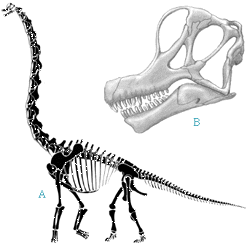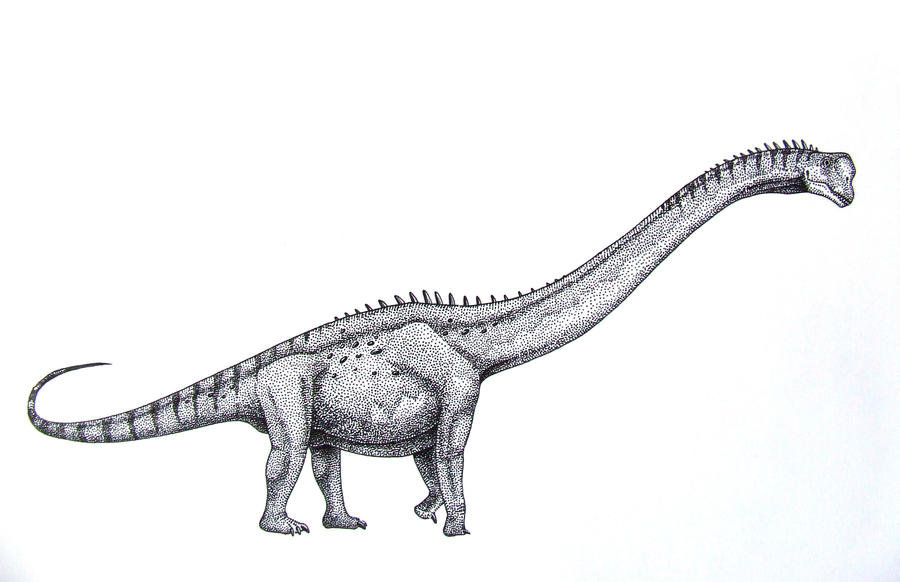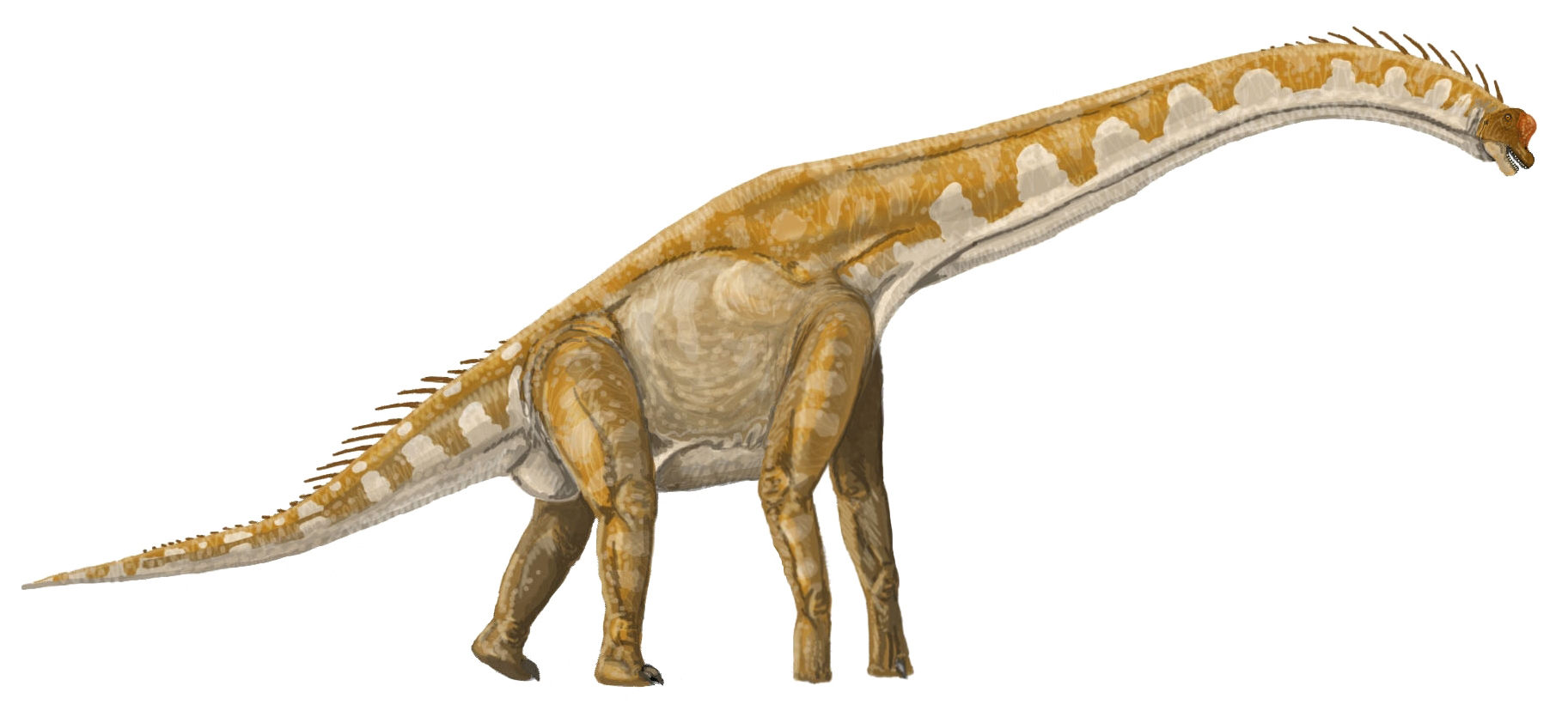Brachiosauridae
Giraffatitan (formerly known as Brachiosaurus brancai ) in Berlin's Natural History Museum.
- Africa
- North America
- Europe
The Brachiosauridae were a group of sauropod dinosaurs. They lived from the Upper Jurassic to Lower Cretaceous. Their fossils have been found mainly in North America, Africa and Europe.
Unlike other sauropods, this group is characterized by unusually long front legs that were as long or even longer than the hind legs. This plan led to a giraffe -like appearance. The taxon Brachiosauridae was erected in 1904 by Elmer Riggs - so this group is among the first described Sauropodengruppen. The Brachiosauridae deemed to be an original group of Macronaria; other representatives of the Macronaria example, were Camarasaurus, Euhelopus and Titanosauria. Today the Brachiosauriden are among the best scientifically investigated sauropods.
Features
General
The Brachiosauridae shows a physique, as is typical for representatives of the original Macronaria: So the limbs are relatively slender and long in relation to the body, leading to an increased step size. The forelimbs were relative to the hind legs longer than other sauropods - although this feature is most pronounced in the Brachiosauriden, it is also evident in Euhelopus. While the front legs were long, the pelvic girdle was reduced: This indicates that the drive for locomotion mainly emanated from the front legs, and not by the hind legs, as in other sauropods. The hind legs were not exactly perpendicular under the body, but were splayed outwards - this feature, however, was much more clearly pronounced in the more advanced Titanosauria.
Size
The largest relatively complete skeletons are the type specimens of Brachiosaurus altithorax and Giraffatitan brancai (formerly Brachiosaurus brancai ); both skeletons show only slight differences in size. Taylor (2009 ) estimates the weight of Brachiosaurus specimen to 28.7 tons, and that of Giraffatitan instance to 23.3 tons, while Paul ( 1988) 35 tons for Brachiosaurus specimen and 31.5 tonnes for the Giraffatitan - copy indicates. These differences in weight between the two skeletons can be traced back to different body proportions: So Brachiosaurus had a longer fuselage and a longer and thicker tail than Giraffatitan.
Other findings indicate that Brachiosauriden could be significantly larger. So too Giraffatitan belonging fibula ( fibula ) is 13% greater than the corresponding bone in the type specimen. The type specimen of Brachiosaurus belonged meanwhile, probably to an as yet adult individual, indicating that these species could be significantly larger. The largest Brachiosauride could have been Sauroposeidon, which is only known by a series of four very long neck vertebrae. Assuming that these species showed the same physique as Brachiosaurus, Sauroposeidon would have had a length of 28 meters and a weight of up to 50 tons. The shoulder height of this genus have 6 to 7 feet were; the 11 to 12 meter long neck could reach heights of up to 18 meters.
Age
Previous findings come from the Upper Jurassic and Lower Cretaceous ( Kimmeridgian to middle Albian ). In Mexico discovered vertebrae of the tail, however, point out that this group still existed during the Late Cretaceous in the late Campanian.
System
The Brachiosauridae were original Macronaria. Most of the authors, such as Upurch and colleagues ( 2004), the Barchisauridae is represented as sister taxon of Titanosauria. These are summarized for Titanosauriformes. Together with the Camarasauridae they form the Macronaria. Wilson ( 2002) summarizes the genus Euhelopus and Titanosauria to Somphospondyli and considers this taxon as sister taxon of Brachiosauridae.
The following cladogram illustrates the Therorie of Upurch and colleagues ( 2004):
Camarasauridae
Brachiosauridae
Titanosauria









